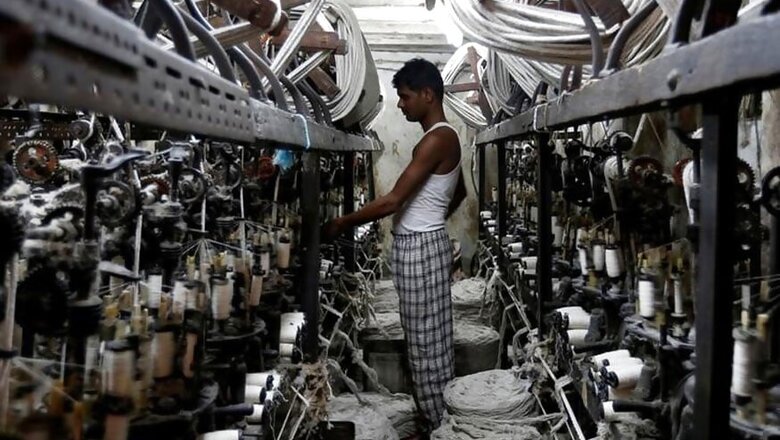
views
India's economy is likely to shrink by 5.3 per cent this fiscal, the lowest GDP growth in the Indian history and the sixth instance of economic contraction, India Ratings and Research said on Wednesday.
"The disorder caused by the COVID-19 pandemic unfolded with such a speed and scale that the disruption in production, breakdown of supply chains/trade channels and total wash out of activities in aviation (some activities have started now), tourism, hotels and hospitality sectors will not allow the economic activity to return to normalcy throughout FY21," the rating agency said in a report.
As a result, besides contracting for the whole year, GDP will contract in each quarter in FY21 (April 2020 to March 2021).
However, the agency believes the GDP growth would bounce back in the range of 5-6 per cent in FY22 (April 2021 to March 2022), aided by base effect and return of gradual normalcy in the domestic as well as global economy.
India Ratings (Ind-Ra) said India's gross domestic product (GDP) will contract 5.3 per cent in FY21.
"This will be the lowest GDP growth in the Indian history (Indian GDP data is available from FY51) and sixth instance of economic contraction, others being in FY58, FY66, FY67, FY73 and FY80; the previous low was negative 5.2 per cent in FY80," it said.
The government had announced an economic package of Rs 20.97 lakh crore (10 per cent of GDP) on May 12, 2020 to mitigate the adverse impact of COVID-19 and related lockdown. However, Ind-Ra's calculations, excluding the monetary measures and existing proposals in the union budget, show that the direct fiscal impact is only Rs 2.145 lakh crore (1.1 per cent of GDP).
"The credit and liquidity enhancing measures announced in the economic package in combination with some of the earlier steps announced by the Reserve Bank of India (RBI) will certainly address the supply-side issues of the economy," it said.
The Indian economy even before the COVID-19 related lockdown was suffering on the demand side, as all the demand drivers, except government final consumption expenditure (GFCE), namely private final consumption expenditure (PFCE), gross fixed capital formation (GFCF) and net exports were floundering.
The lockdown and its impact on the economy and livelihoods only aggravated the sagging consumption demand.
"Ind-Ra believes the government is aware of it; but, the near absence of demand-side measures in the economic package indicates the hard budget constraint facing the government," the report said.
Ind-Ra saw PFCE contracting 5.1 per cent in FY21 (FY20: 5.3 per cent yoy) to reach a level lower than FY19's. Even GFCF will contract 17.6 per cent in FY21 and the investment revival will now be pushed beyond FY22 due to a combination of excess capacity, weak demand, stretched balance sheet of Indian corporates and budget constraints leading to reduced government capex.
"The external environment continues to be challenging due to COVID-19 related restrictions coupled with trade friction and protectionist policy pursued by many developed economies," it said.
Ind-Ra expected merchandise exports to decline 9.4 per cent in FY21 (FY20: negative 4.9 per cent), as all major export commodities would clock negative growth. Merchandise imports are expected to decline 17.4 per cent in FY21 (FY20: negative 8.9 per cent).
As a result, the trade deficit is estimated to decline to a four-year low of USD 97.7 billion (3.9 per cent of GDP) and current account deficit to USD 3.3 billion (0.1 per cent of GDP) in FY21.
However, 1QFY21 may see a current account surplus.
"From the supply side, agriculture is the only bright spot. Agricultural gross value added (GVA) is expected to grow 3.5 per cent in FY21," the rating agency said adding the Indian Meteorological Department has predicted the monsoon rainfall to be 102 per cent of long period average (1961-2010) in 2020.
Ind-Ra expects the retail and wholesale inflation to come in at 3.6 per cent and 1.2 per cent, respectively, in FY21.
"Fiscal deficit of the central government in FY21 is expected to more than double (7.6 per cent of GDP) the budgeted amount (3.5 per cent of GDP). The majority of the fiscal slippage will be from the revenue side," it added.




















Comments
0 comment